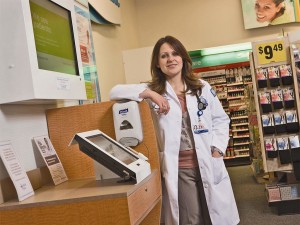
By: David Wilson, CCIM, Executive Vice President, Lockard Development
High traffic. Check. Clustered with other popular destinations. Check. Convenient parking, eye-catching signage and well-maintained surroundings. Check, check, check.
The criteria that influences where retailers decide to locate is now being used in the health care industry. Medical practices from general practitioners to specialists to urgent care centers are eschewing hospital and office park settings in favor of strip malls and shopping centers.
Several factors are driving the “retailization” of health care, including:
The need for expansion. Now more than ever, with the Baby Boomer generation beginning to qualify for Medicare and the passing of the Affordable Care Act (ACA) that has afforded more than 16.4 million health care coverage, health care services are in high demand. This new breed of health care consumer, ones who typically used to forego care or sought care in emergency rooms and government facilities, are helping to push the boundaries from your typical care settings to unconventional and convenience based care facilities.
Evolving delivery models. The delivery of health care today requires more points of connection with the provider, both virtual and face-to-face. Furthermore, outpatient services now make up nearly half of a typical health care organization’s revenue. The emphasis on reducing costs prompted by the ACA is further shifting care away from hospitals to outpatient clinics.
Availability of retail real estate. A number of chain retailers and big box stores have closed stores or gone out of business altogether since the 2008 recession. This left a glut of empty space. The imbalance of supply and demand created low-cost opportunities for health care facilities to expand.
It isn’t just empty storefronts in outdoor retail districts that are being filled by medical practices. For example, Vanderbilt Health occupies 850,000 square feet at the One Hundred Oaks Mall in Nashville, Tennessee. The facility offers patients a pager if they want to do a little shopping between checking in and getting seen by a doctor.
Consumer expectations. Whether its groceries or gas, today’s consumers expect quickness and convenience. Health care has joined the list of staples that people want convenient access to. Consumers demand clinics that are close to home and work and where they can take care of errands before or after their visit. Rather than making patients come to them, medical professionals are migrating closer to their patients. Consider it a near return of the old traditional house call.
Competition for patients. Though there are more patients than ever, clinics still require a higher volume due to extremely thin margins. The cost to deliver care continues to rise, and medical practices continue to be squeezed by Medicare reimbursements, new compliance requirements and insurance companies. That makes funds for marketing and advertising scarce. Additionally, consumers have begun to move away from a primary care physician in favor of convenience. This transient nature of the consumer makes patient retention a challenge. Practices, therefore, must rely on visibility and easy access to entice new patients.
So while consumers aren’t (yet) choosing providers based on price, they are making their decisions in much the same way as they choose grocery stores and coffee shops. Health care practices that don’t adapt to this new reality face the prospect of having a “Going Out of Business” sign in the front window.
